Dermal Fillers in Port Saint Lucie
Sculptra | Restylane | Juvederm | Radiesse and Versa
Say goodbye to fine lines and deep wrinkles without surgery or downtime. This facial rejuvenation treatment is chosen annually by more than 1 million men and women. Smooth your skin and stimulate collagen production for a youthful, radiant appearance.
What are Dermal Fillers?
Do you want fuller lips? Get rid of deep wrinkles? Do you want to achieve more youthful-looking skin? Injectable dermal fillers are a non-surgical cosmetic procedure that can plump thin lips, enhance shallow contours, soften facial creases, remove wrinkles and improve the appearance of scars.
They are gel-like substances that help add volume to your skin on:
- Lips
- Cheeks
- Nasolabial folds
- Marionette lines
- Nose
- Under eye bags
- Forehead lines
- Chin and jawline
- Hands
The most common fillers in the market, and FDA-approved are:
- Sculptra
- Juvederm
- Restylane
- Radiesse
- Revanesse Versa
We can definitely help you to find out which one is the right for you if you don't know. Book a consultation
FDA-approved Brands
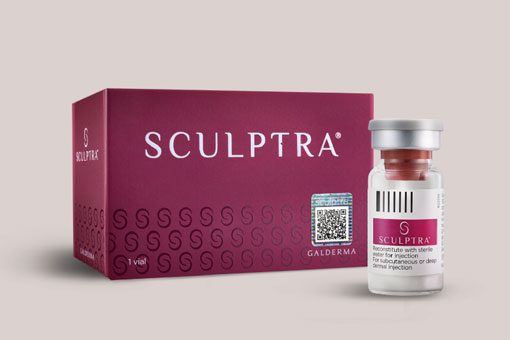
Sculptra
Sculptra® is an injectable poly-L-lactic acid, It is different from any other filler because it is the number one filler that stimulates collagen production even after 2 years of treatment. Typically 3 treatment sessions may be needed for best results.
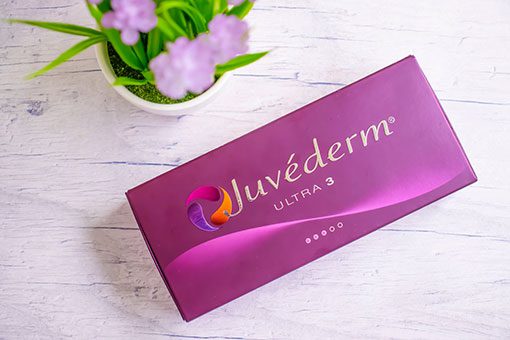
Juvederm
Juvederm is probably one of the most popular cosmetic dermal fillers made out of hyaluronic acid because it was the first approved in the United States by the FDA (2006). It offers 5 different and long lasting fillers. Each one adds volume and is designed for different needs in different areas of the face.
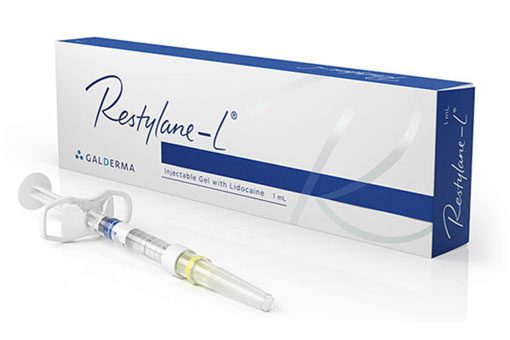
Restylane
The Restylane family is also made of Hyaluronic acid and their line of products is formulated for specific areas of the face and hands. The filler is injected into the treatment area(s) using an ultrafine needle providing natural-looking results to create the desired aesthetic effect.
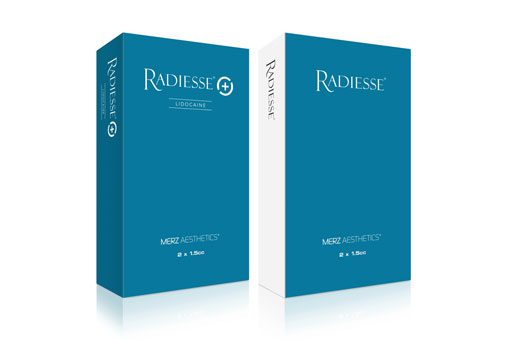
Radiesse
The first and only Calcium hydroxylapatite (CaHA) injectable treatment, FDA-approved in the U.S. Immediate natural-looking results contouring plus collagen and elastin production stimulation. The treatment areas are the lower face, hands, and jawline.
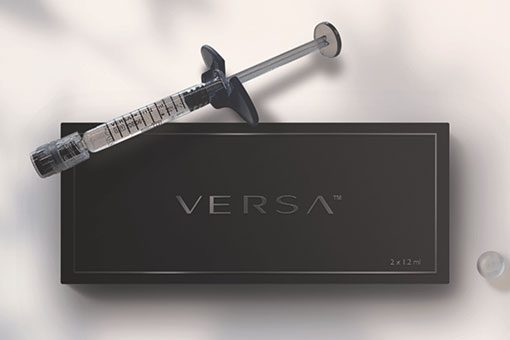
Revanesse Versa
Versa is an FDA-approved hyaluronic acid dermal filler that can treat moderate to severe facial wrinkles and folds. A Revanesse® Versa™ treatment is minimally invasive and provides immediate results. It is ideal for nasolabial folds, and plumping of the lips, and lasts up to 12 months.
CONTACT US FOR A CONSULTATION
– call (772) 337-1642 or contact us below –

TALK TO AN EXPERT
Fill out the form and someone from our team will contact you within the next 24 hours.
Elite Top Aesthetics
10377 South US Hwy. 1 Suite #101 Port St. Lucie, FL 34952Frequently Asked Questions
Which dermal fillers last longest?
Hyaluronic acid fillers, such as Restylane and Juvederm, tend to last six months to a year. Calcium hydroxylapatite fillers, such as Radiesse, generally last longer, up to two years. Poly-L-lactic acid fillers, such as Sculptra, also tend to last longer, up to two years or more.
It’s important to note that the duration of effect of dermal fillers can vary from person to person, depending on a variety of factors including the individual’s metabolism, the area of the face being treated, and the amount of product used. It’s also worth noting that results may vary and are not guaranteed.
It’s always a good idea to discuss your treatment goals with a qualified healthcare provider and to carefully consider the pros and cons of different dermal filler products before making a decision.
What does a dermal filler do?
Dermal fillers are injectable products that are used to add volume to the skin and smooth out wrinkles and lines. They are made of various substances, including hyaluronic acid, calcium hydroxylapatite, and poly-L-lactic acid.
Dermal fillers are typically used to:
- Plump thin lips
- Enhance shallow contours
- Soften facial creases and wrinkles
- Improve the appearance of recessed scars
- Improve the appearance of aging hands
Are dermal fillers Better than Botox or Dysport?
Both dermal fillers and Botox o Dysport are popular non-surgical treatments used to improve the appearance of the face. They work in different ways and are used to treat different types of wrinkles and lines.
Dermal fillers are injectable products that add volume to the skin and smooth out wrinkles and lines.
Botox or Dysport, on the other hand, is a prescription medication that is injected into the muscles of the face to relax wrinkles and lines. Botox is typically used to smooth out dynamic wrinkles caused by muscle movements, such as frown lines, forehead wrinkles, and crow’s feet.
What are the side effects of dermal fillers?
Common side effects of dermal fillers can include:
-
Swelling: This is the most common side effect and usually goes away within a few days.
-
Bruising: Dermal fillers may cause bruising at the injection site, which usually disappears within a week or two.
-
Pain or discomfort: Some people may experience pain or discomfort at the injection site, which can usually be managed with over-the-counter pain medications.
-
Redness or irritation: The skin around the injection site may become red or irritated, but this should resolve within a few days.
-
Lumps or bumps: It is possible for dermal fillers to cause lumps or bumps under the skin, but these can usually be massaged or treated with a hyaluronidase injection to dissolve the filler.
-
Allergic reactions: Rarely, people may have an allergic reaction to the ingredients in dermal fillers, which can cause symptoms such as hives, rash, itching, or difficulty breathing.
What happens when you stop getting fillers?
If you stop getting dermal fillers, the effects of the treatment will gradually fade over time as the product is absorbed by the body. The rate at which the effects fade will depend on the specific product and the individual’s skin type and lifestyle. In general, the effects of dermal fillers will last longer in people with thicker, more elastic skin and in those who avoid sun exposure and maintain a healthy lifestyle.
It is important to note that dermal fillers are not a permanent solution for improving the appearance of the skin. If you wish to maintain the effects of dermal fillers, it will be necessary to continue receiving treatment on a regular basis. It is important to discuss your treatment plan and goals with a qualified and experienced healthcare professional to determine the best course of action for you.
What to avoid after fillers?
After getting dermal fillers, it is important to avoid certain activities in order to help the treatment area heal properly and minimize the risk of side effects. Here are some general guidelines to follow after getting dermal fillers:
-
Avoid strenuous activities: It is important to avoid activities that increase blood flow to the treated area, such as exercise and heavy lifting, for at least 24-48 hours after treatment. This will help reduce swelling and minimize the risk of bruising.
-
Avoid heat and sun exposure: Exposure to heat, such as hot showers and saunas, can cause swelling and irritation to the treated area. It is also important to protect your skin from the sun by wearing a hat and sunscreen with a high SPF.
-
Avoid touching or massaging the treated area: It is important to avoid touching or massaging the treated area for at least 24 hours after treatment. This can help prevent the filler from moving or spreading to unintended areas.
-
Avoid alcohol and blood thinners: It is recommended to avoid alcohol and blood thinners, such as aspirin and ibuprofen, for at least 24 hours after treatment. These substances can increase the risk of bruising and bleeding.
It is also important to follow any specific instructions provided by your healthcare provider after getting dermal fillers. If you experience any unusual symptoms or side effects after treatment, be sure to contact your healthcare provider for further evaluation and guidance.
At what age should you start getting fillers?
There is no specific age at which people should start getting dermal fillers. The decision to get dermal fillers is a personal one that should be based on an individual’s goals and concerns. Some people may choose to get dermal fillers in their 20s or 30s to help prevent the signs of aging, while others may not be interested in getting dermal fillers until they are in their 50s or 60s.
What are fillers made with?
They are made with a variety of different ingredients, including hyaluronic acid, calcium hydroxylapatite, and poly-L-lactic acid.
- Hyaluronic acid is a naturally occurring substance that is found in the skin, joints, and eyes. It is a popular ingredient in dermal fillers because it has the ability to hold onto water, which helps to plump up the skin and smooth out wrinkles.
- Calcium hydroxylapatite is a synthetic substance that is similar to the minerals found in bones and teeth. It is often used in dermal fillers to add volume to the skin and improve the appearance of wrinkles and fine lines.
- Poly-L-lactic acid is a synthetic polymer that is biocompatible with the human body. It is often used in dermal fillers to stimulate collagen production, which helps to improve the texture and elasticity of the skin.
It is important to note that dermal fillers are medical products that should only be administered by qualified healthcare professionals.
Which Dermal Filler do I need?
There are several different types of dermal fillers available, and the best one for you will depend on your individual goals and concerns.
Hyaluronic acid fillers are a popular choice because they are made with a naturally occurring substance that is found in the skin. These fillers are often used to add volume to the lips and smooth out wrinkles around the mouth. Some examples of hyaluronic acid fillers include Juvederm, Restylane, and Versa.
Calcium hydroxylapatite fillers are another option and are often used to add volume to the cheeks and improve the appearance of wrinkles around the nose and mouth. An example of a calcium hydroxylapatite filler is Radiesse.
Poly-L-lactic acid fillers are a longer-lasting option and are often used to stimulate collagen production, which helps to improve the texture and elasticity of the skin. An example of a poly-L-lactic acid filler is Sculptra.



